After the exhilaration of seeing the first set of petroglyphs, we got back onto the Ganpatipule to Nivali road. Next destination: Chave Deood ( pronounced as dey-ood) fata or turning, which is between Chafe and Jakadevi. As usual, the road signage had disappeared and we had to backtrack afer overshooting our turn off. The Chave Deood fata comes before Jakadevi while approaching from Ganpatipule. After turning left at the fata, we were supposed to first cross many chire (laterite) mines before reaching the Deood fata. As usual, we overshot our target and before we realised it we had reached the next turn-off further North. A gentleman herding cattle whose name was Gavankar identified it as the Chave turning. Fortuitously, one rickshaw also stopped and the guy inside turned out to be the sarpanch (one more Gavankar) of Chave. They helpfully pointed out a rough circle of rocks just to the left of the road (west side) exactly in the angle of the road turning. Initially Mr Sarpanch refused to look us in the eyes but thawed a bit when he heard praise of the heritage the village was harbouring. He volunteered that the village would be better able to take care of this heritage if the government took care to label it as such. The circle contained 7-8 strange images of which only one looked sharper than the rest but did not look like anything familiar. By now, even the rickshaw driver had come out to smile. They all helpfully directed us back to the Deood fata. Over at the fata there was a sign for a Durga Mata Mandir (temple) and there they told us we would find
carvings of animals and vegetables; to be more specific ‘bhopalicha vel’ or creeper.
We reached the turning and to our left was a stone wall (gadga) which we knew we had to climb to see the petroglyphs beyond on the Southern side of the wall. Apparently we were supposed to see a multitude of animals including a gigantic rhino. Just as I was clambering up the wall Rutwij frantically called to say that at Chave fata, which we had just left behind, was a carving of a pregnant lady which he was particularly keen I see. But just as I was talking to him, I had successfully climbed up the gadga to see Mr Rhino positively race past me most powerfully and I was completely entranced by him. By now, both the driver Das and Deepak were getting just as fascinated by all the animals running amok and were indulging in a guessing game. There were most definitely no vegetables, though Mr Risbud told us later, the locals like to believe so. Strangely the carvings are better seen while wearing glares or through the mobile camera. We jumped down from the gadga into the rhino enclosure. The property belongs to one Mr Apte. At one corner of the gadga is a massive ‘airan’ or survey marking and the rhino as I mentioned previously is to the South of the gadga.
Mr Prehistoric Man was quite an artist. Even the neck of the rhino clearly reflects thickened skin. He is in a hurry to get to some destination. He is surrounded by multiple animals: a monkey, a porcupine, a deer and another deer like animal. At one side is what looks like an elongated snake like animal with geometric patterns which the archeologists like to call ‘surfers’. The monkey and porcupine seem to be surfing on the surfboard. There are two footprint carvings. The whole canvas is amazingly cluttered and yet Mr Rhino exudes tremendous energy and power as he charges towards an unseen element.
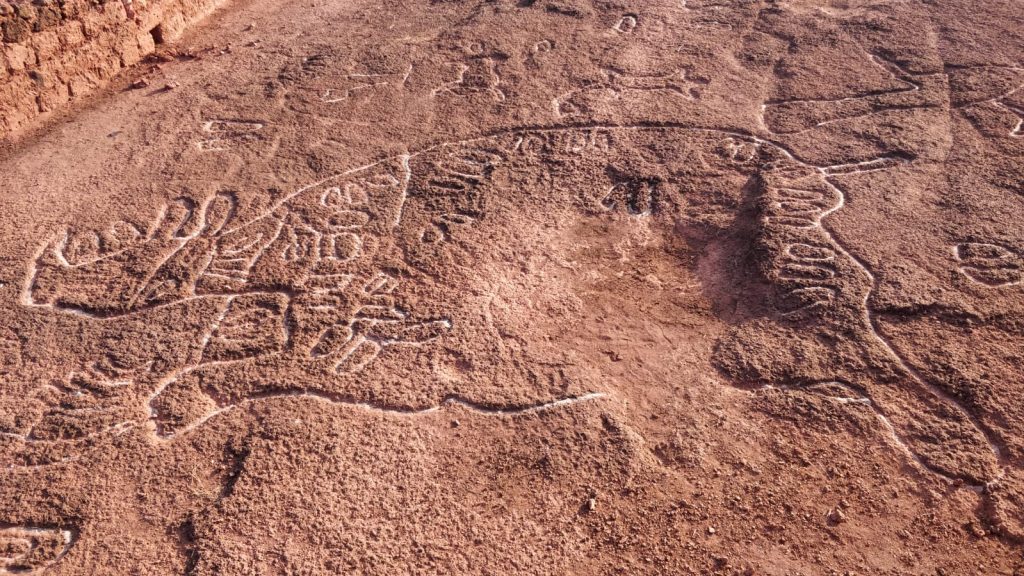
By the time I had recovered sufficiently from this profusion of animals, I looked once again at the snapshot of the abstract from the previous site. And lo and behold and what do I see : a pregnant woman with her legs spread apart seemingly in labour. How could I, a gynecologist, have missed her? Her privacy and anonymity is ensured by the fact that she has no head. The archeologists think this etching is a prototype of the later goddess Lajjagauri. As for me, she plain and simply looks like a lady in labour.
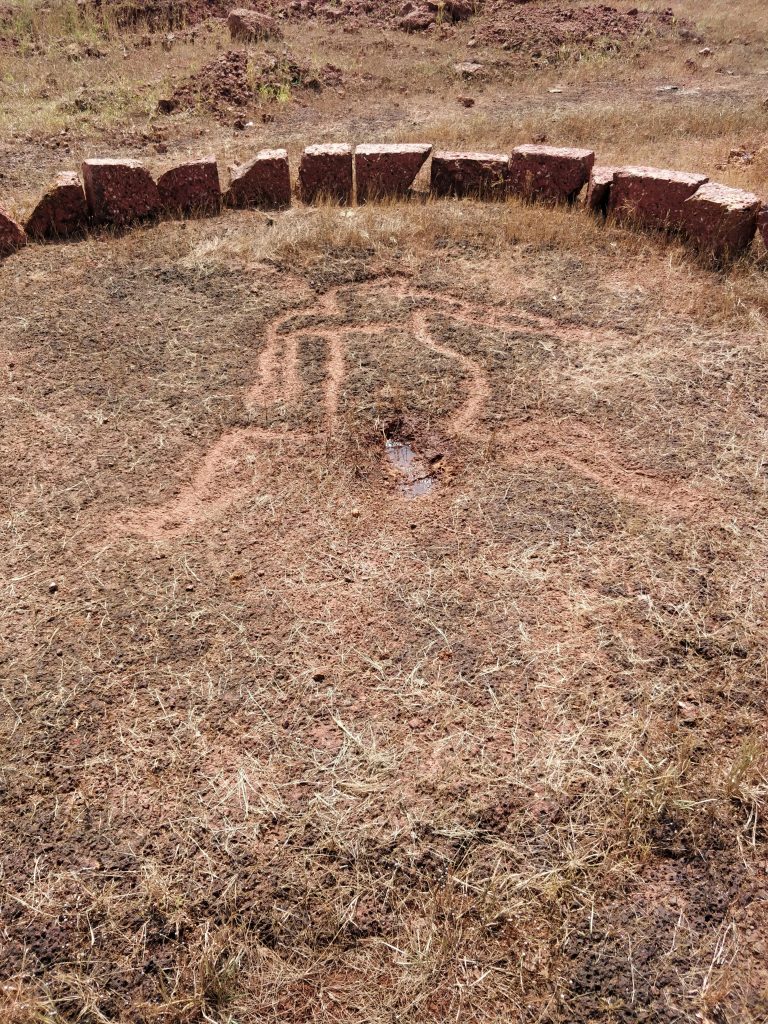
The sun is beating relentlessly over our heads but now we are charged with all that we have seen as we move onto Ukshi. And hopefully Pochri.
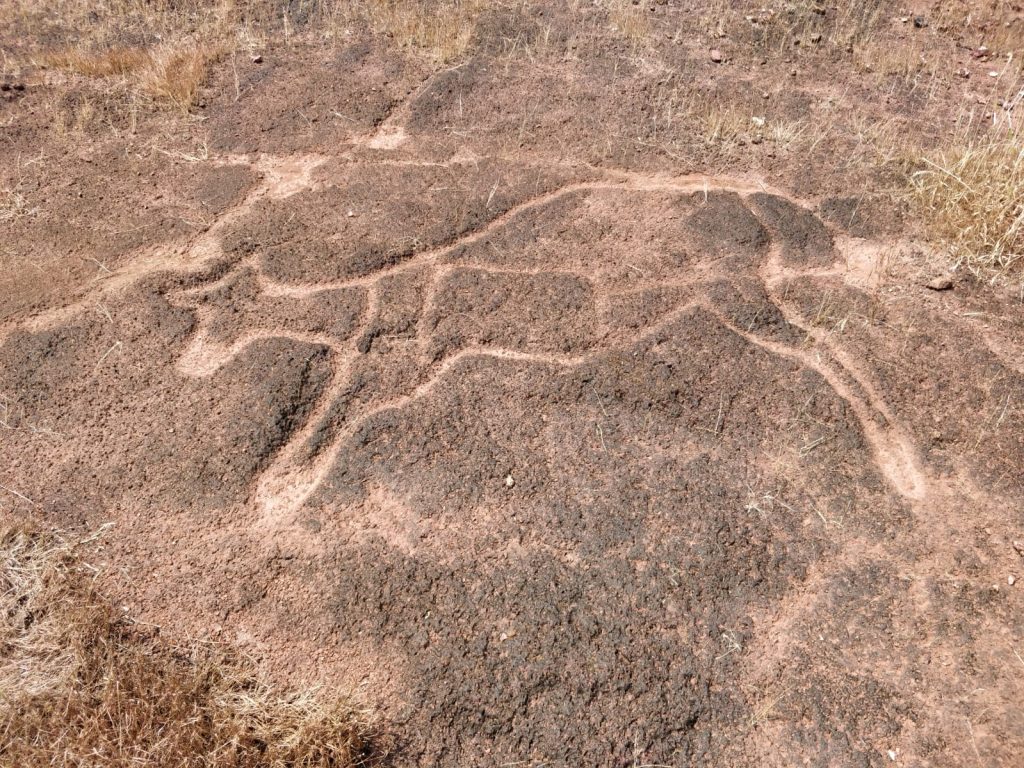
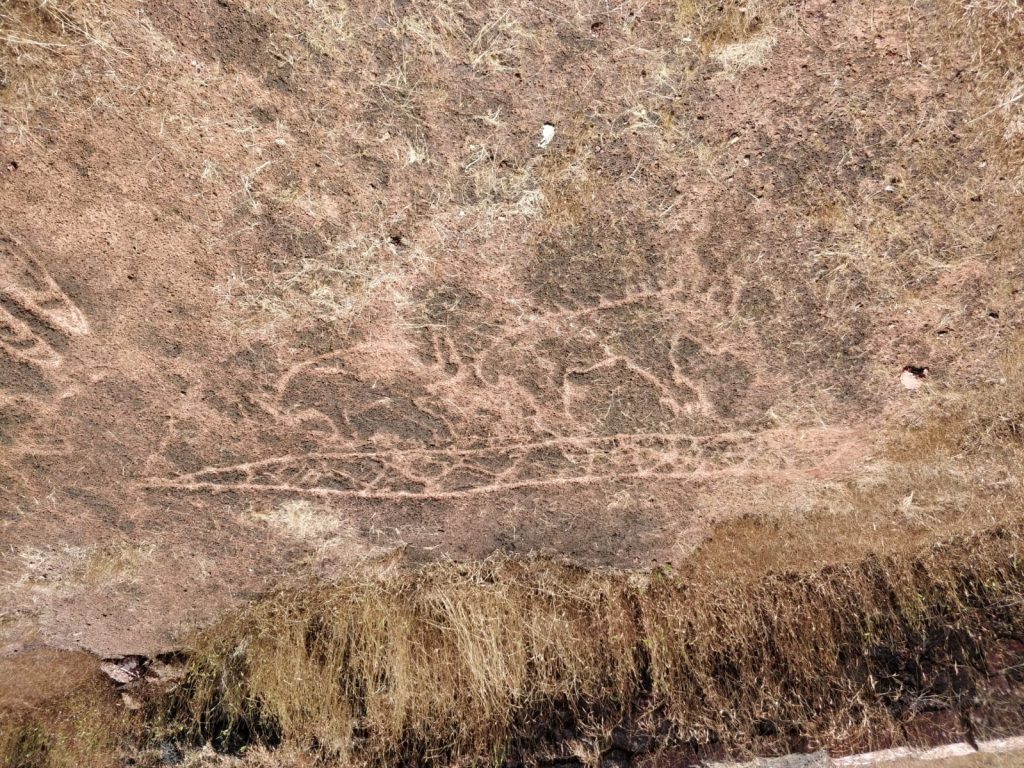
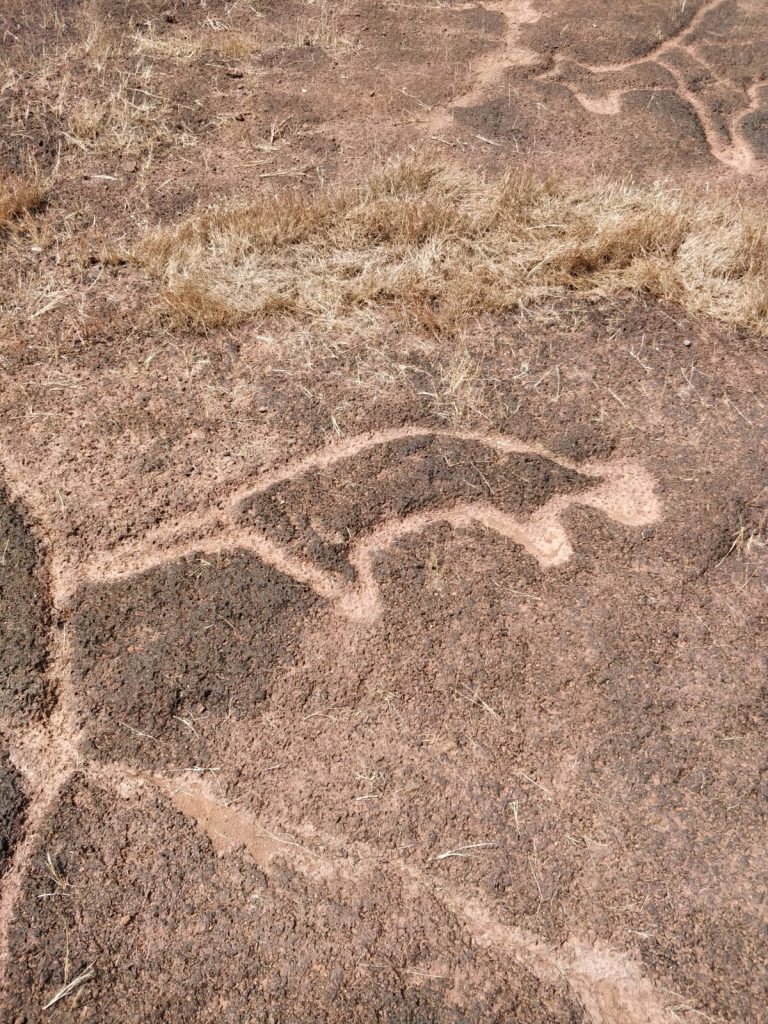
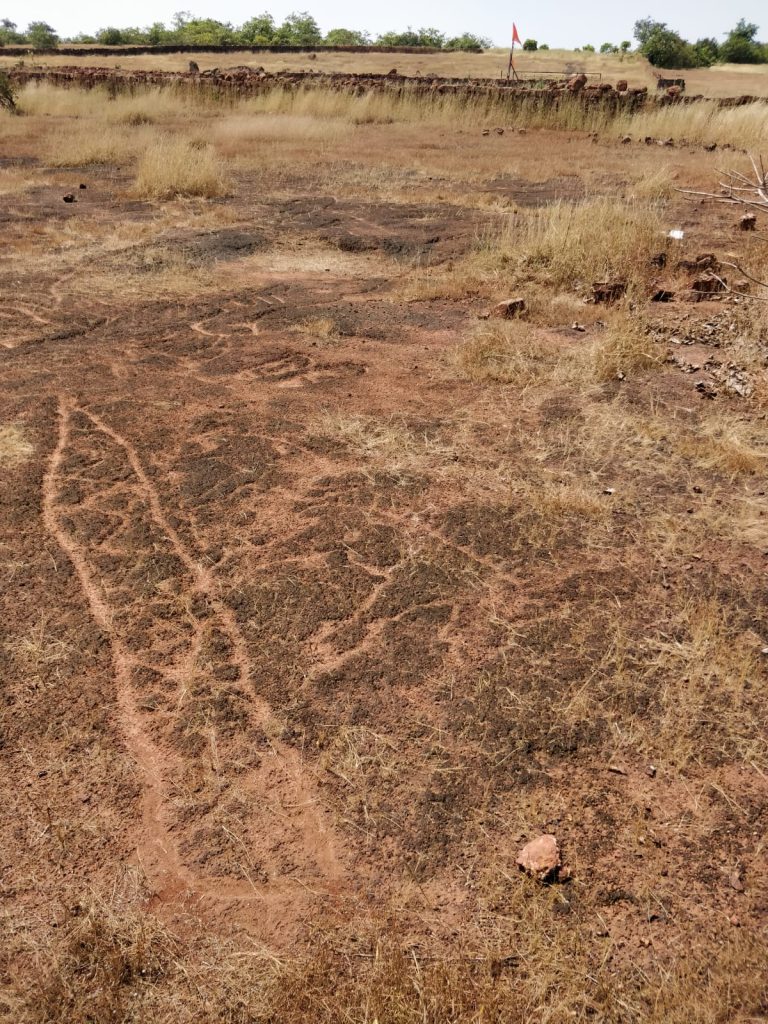
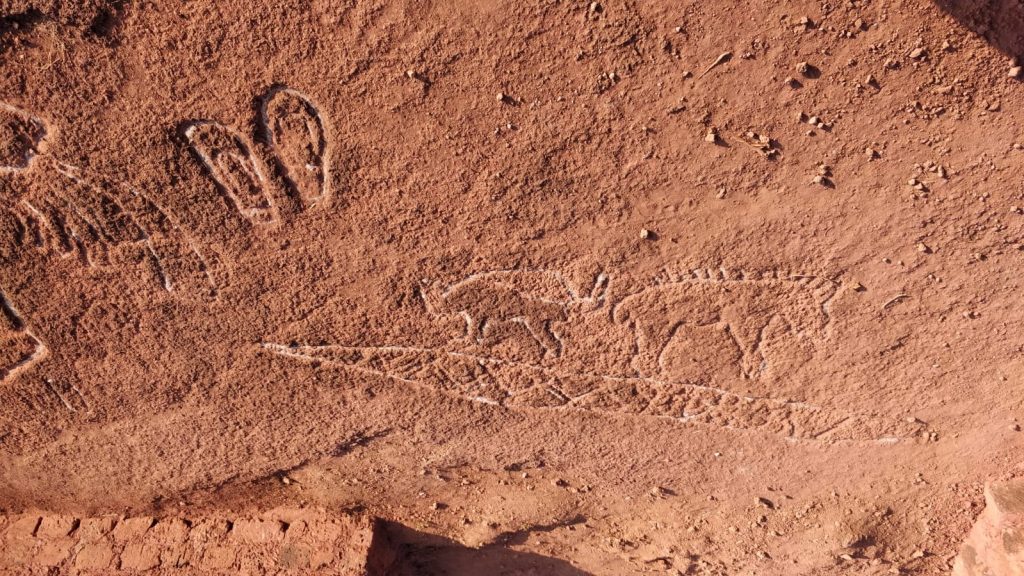




Dr. Vinita Salvi, great work. It is well done and I enjoyed each and every article you have written. There is a lot of research done which makes it more interesting. Also your personal experience counts the most. Good luck!!